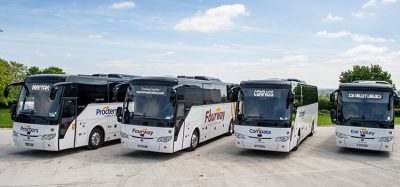Virgin Hyperloop unveils vision for the future of travel for passengers
- Like
- Digg
- Del
- Tumblr
- VKontakte
- Buffer
- Love This
- Odnoklassniki
- Meneame
- Blogger
- Amazon
- Yahoo Mail
- Gmail
- AOL
- Newsvine
- HackerNews
- Evernote
- MySpace
- Mail.ru
- Viadeo
- Line
- Comments
- Yummly
- SMS
- Viber
- Telegram
- Subscribe
- Skype
- Facebook Messenger
- Kakao
- LiveJournal
- Yammer
- Edgar
- Fintel
- Mix
- Instapaper
- Copy Link
Posted: 29 January 2021 | Intelligent Transport | No comments yet
Virgin Hyperloop outlines its vision for the future of high-speed travel with a new video, which takes viewers on a virtual hyperloop journey from gate to destination.
Just months after its first passenger test, Virgin Hyperloop has revealed its vision for what the future of hyperloop travel might look like.
A newly released concept video takes the viewer step-by-step through a hyperloop journey, from arriving at the portal to boarding the pod.
“Designing a new mode of transportation from scratch is both an opportunity and a responsibility,” said Sara Luchian, Virgin Hyperloop’s Director of Passenger Experience and one of the first people to ride the hyperloop in November. “Hyperloop technology – and what it enables – is paradigm-shifting. It follows that the passenger experience should be nothing short of extraordinary.”
Virgin Hyperloop worked with several companies to create the video – including Bjarke Ingels Group (BIG) for the portal designs, Teague for the pod designs, SeeThree for the video and animation, and Man Made Music for the score and sonic identity – to design a “comprehensive, multi-sensory passenger experience” that it says surpasses that of any other form of mass transit.
“Virgin Hyperloop can accelerate the future of mobility on land. The new mode of travel at supersonic speed rethinks transportation and the perception of space, landscape, time, and distance,” said Bjarke Ingels, Founder & Creative Director, BIG-Bjarke Ingels Group. “In this day and age, Virgin Hyperloop taking off from our portals provides holistic, intelligent transportation for a globalised community to travel across vast distances in a safer, cleaner, easier, and faster way than airlines.”
“We leveraged decades of experience designing how people and things move across various modalities – taking some of the best aspects from aviation, rail, automotive, and even hospitality to create a new and better passenger experience that is distinct to Virgin Hyperloop,” said John Barratt, CEO and President, Teague. “Recessed seat wells provide a greater sense of space, while the raised aisle is a touch of the unexpected and unique.
“Bands of greenery and wood textures subvert the aesthetic of typical mass transit materials with something optimistic and fresh. All lighting in the pod—including the unassuming information displays—are dynamic and adjust based on traveller activity and journey milestones.”
Virgin Hyperloop says a key pillar of its passenger experience is accessibility – ensuring that this new form of transportation will expand opportunities for the masses. While ticket prices will vary depending on the exact route, a recent study in Ohio found that hyperloop fares would be more akin to the cost of driving, rather than flying.
“It’s simple. If it’s not affordable, people won’t use it,” said Jay Walder, CEO of Virgin Hyperloop. “Daily high-speed transport is currently not feasible for most people, but we want to change that notion. Imagine being able to commute between cities that are currently hours apart in minutes – and the endless possibilities that opens up.”
On demand and direct to destination, the hyperloop system would reportedly be able to transport thousands of passengers per hour, despite the fact that the each vehicle is planned to carry only about 28 passengers at once. This high throughput is achieved by convoying, where vehicles are able to travel behind one another in the tube within milliseconds, controlled by Virgin Hyperloop’s machine intelligence software.
Following successful passenger testing, Virgin Hyperloop says it is currently paving the way for the regulation and certification of hyperloop systems around the world. The company aims to achieve safety certification by 2025, with commercial operations – such as those depicted in this video – beginning in 2030.
Related topics
Alternative Power, Artificial Intelligence, Infrastructure & Urban Planning, Intelligent Transport Systems (ITS), Passenger Accessibility, Passenger Experience, Public Transport
Related modes
Hyperloop
Related organisations
Bjarke Ingels Group (BIG), Man Made Music, SeeThree, Teague, Virgin Hyperloop
Related people
Bjarke Ingels, Jay Walder, John Barratt







